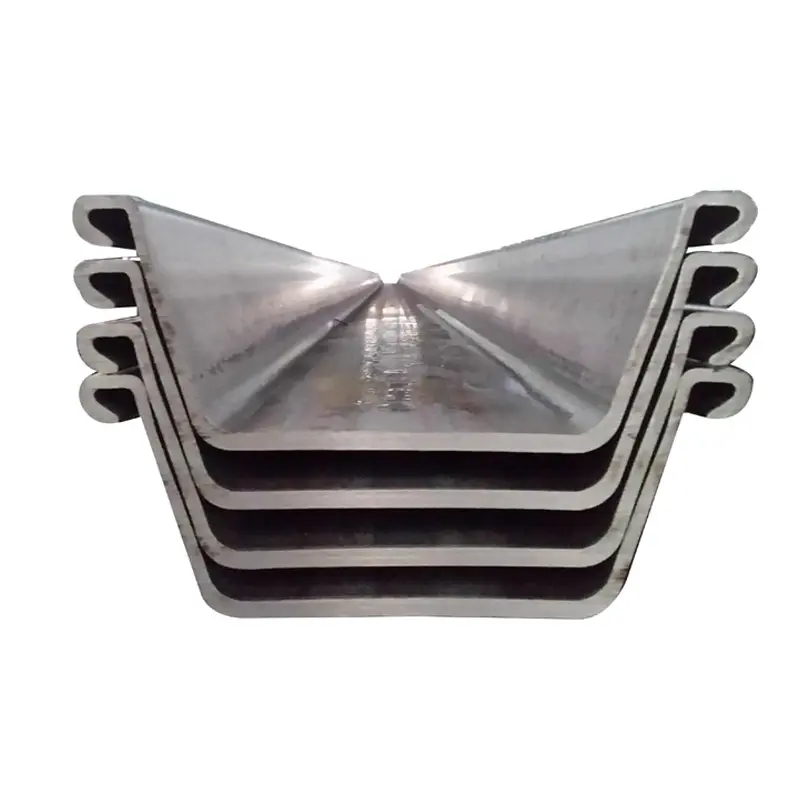Heavy duty steel sheet pile is designed for high load applications requiring exceptional structural strength and durability, typically used in deep excavations, industrial foundations, and heavy civil engineering projects. These sheet piles feature thicker web sections, higher yield strengths (often exceeding 450 MPa), and robust interlock designs to withstand extreme lateral pressures from dense soils, high groundwater tables, or heavy surcharges. Material selection often includes quenched and tempered steel grades like S355JO (EN 10025) or Q460C (GB/T 1591), offering a balance of strength, toughness, and formability during rolling. The manufacturing process involves hot rolling with controlled cooling to achieve uniform mechanical properties, followed by rigorous testing for impact resistance (Charpy V notch test) and grain structure analysis. Heavy duty sheet piles are commonly used in projects such as underground parking garages, metro station excavations, and industrial plant foundations, where soil conditions include cobbles, boulders, or highly compacted sediments. Their installation requires powerful equipment like hydraulic impact hammers or vibratory hammers with high frequency excitation to penetrate hard strata, often preceded by soil improvement techniques such as pre augering to reduce driving resistance. Engineering design emphasizes load bearing capacity calculations, incorporating factors like soil cohesion, internal friction angle, and groundwater buoyancy effects. Quality control measures include ultrasonic thickness testing to ensure wall thickness compliance and dye penetrant inspection to detect surface defects in interlocks. International standards such as AWS D1.1 for welding and AISC 360 for structural steel design provide guidelines for their use in seismic zones, ensuring ductility and energy absorption during earthquakes. The economic advantage of heavy duty sheet piles lies in their ability to support deep excavations with minimal horizontal deflection, reducing the need for expensive bracing systems. However, their use requires careful site investigation to avoid overdesign, as their high strength also means higher material costs and heavier installation equipment. Ongoing innovations include the development of composite heavy duty sheet piles, combining steel with fiber reinforced polymers (FRP) to enhance corrosion resistance without compromising strength, targeting harsh industrial environments like chemical plants or waste treatment facilities.


